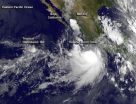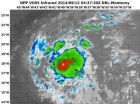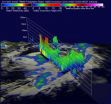(Press-News.org) TORONTO, Sept. 12, 2014 – High-dose opioid prescribing increased by 23 per cent in Canada between 2006 and 2011, despite clinical guidelines recommending that most patients should avoid high-doses of these drugs, according to new research.
Researchers at St. Michael's Hospital and the Institute for Clinical Evaluative Sciences (ICES) found that rates of high-dose opioid dispensing across Canada increased from 781 units per 1,000 people in 2006 to 961 units per 1,000 people in 2011.
"We found that high-dose prescribing was widespread across the country, but the prevalence differed considerably between provinces," said lead author Tara Gomes, a scientist at the Li Ka Shing Knowledge Institute of St. Michael's Hospital. "These findings suggest that although a national strategy is likely necessary, different provinces may need slightly different approaches."
The study, published today in Canadian Family Physician, showed that, high-dose opioid dispensing rates remained relatively stable in Alberta and British Columbia, increasing only 6.3 per cent and 8.4 per cent, respectively. However, rates in Newfoundland and Labrador and Saskatchewan rose substantially (84.7 per cent and 54 per cent, respectively).
Ontario and Quebec exhibited the highest and lowest rates of high-dose opioid dispensing, respectively. Ontario dispensed 1,382 high-dose opioid units per 1,000 people – more than one unit per person – whereas Quebec dispensed only 368 high-dose opioid units per 1,000 people.
"Provinces not only differed in their prevalence of high-dose opioid prescribing, but each province also appears to favour different opioids," said Gomes, who is also a scientist at ICES. "For example, in Alberta and Ontario, oxycodone is the drug most commonly prescribed at high doses, while in British Columbia, it's morphine."
Gomes said there are several potential explanations for the provincial differences in high-dose opioid prescribing, including varying coverage among public drug plans, training among prescribers and differential marketing on the part of pharmaceutical companies.
"Our findings highlight the profound regional variation in high-dose opioid prescribing across Canada," said Gomes. "These results have important public health and policy consequences, given the elevated risk of overdose among individuals treated with high doses of these drugs."
More than 180 million units of high-dose opioid tablets and patches were dispensed across Canada during the six-year study period. Almost half of all the high-dose units dispensed were oxycodone tablets (49 per cent), followed by morphine tablets (24 per cent), hydromorphone tablets (18 per cent) and fentanyl patches (9 per cent).
Canada and the United States have the highest levels of prescription opioid use in the world.
On average, more than 30 million high-dose opioid tablets or patches are dispensed in Canada each year.
Until recently, clinical practice guidelines provided no recommended maximum dose and many experts suggested that the dose could be increased with little risk of harm.
Now, opioid doses equivalent to 200 mg of morphine per day are considered "'watchful doses," according to Canadian clinical practice guidelines. These guidelines, introduced in 2009, recommend clinicians carefully consider the potential risks of addiction and overdose before prescribing a dose that exceeds this threshold.
The per capita rate of high dose opioid dispensing increased steadily in Canada between 2006 and 2008 before plateauing in 2009 and 2010. This plateau coincided with the release of Canadian guidelines for opioids, as well as the first paper showing that the rate of fatal opioid overdoses had increased dramatically in Canada.
INFORMATION:
This study was supported by a grant from the Ontario Ministry of Health and Long-Term Care Drug Innovation Fund and ICES.
About St. Michael's Hospital
St. Michael's Hospital provides compassionate care to all who enter its doors. The hospital also provides outstanding medical education to future health care professionals in 27 academic disciplines. Critical care and trauma, heart disease, neurosurgery, diabetes, cancer care, care of the homeless and global health are among the hospital's recognized areas of expertise. Through the Keenan Research Centre and the Li Ka Shing International Healthcare Education Centre, which make up the Li Ka Shing Knowledge Institute, research and education at St. Michael's Hospital are recognized and make an impact around the world. Founded in 1892, the hospital is fully affiliated with the University of Toronto.
About ICES
ICES is an independent, non-profit organization that uses population-based health information to produce knowledge on a broad range of health care issues. Our unbiased evidence provides measures of health system performance, a clearer understanding of the shifting health care needs of Ontarians, and a stimulus for discussion of practical solutions to optimize scarce resources. ICES knowledge is highly regarded in Canada and abroad, and is widely used by government, hospitals, planners, and practitioners to make decisions about care delivery and to develop policy.
Media contacts
For more information, or to arrange an interview, please contact:
Geoff Koehler
Adviser, Media Relations
St. Michael's Hospital
416-864-6060 ext. 6537
koehlerg@smh.ca
Deborah Creatura
ICES
deborah.creatura@ices.on.ca
(o) 416-480-4780
(c) 647-406-5996
High-dose opioid prescribing continues to climb
2014-09-12
ELSE PRESS RELEASES FROM THIS DATE:
Study solves the bluetongue disease 'overwintering' mystery
2014-09-12
The bluetongue virus, which causes a serious disease that costs the
cattle and sheep industries in the United States an estimated $125
million annually, manages to survive the winter by reproducing in the
insect that transmits it, report veterinary scientists at the
University of California, Davis.
The findings solve a century-old mystery and are particularly
significant as global climate change brings more moderate winter
temperatures around the world. The new study appears Sept. 12 in the
journal PLOS ONE.
"By conducting this epidemiological study on a commercial ...
Tropical Storm Odile expected to 'eat' Tropical Depression 16E
2014-09-12
The image of the Eastern Pacific Ocean and the two storms was taken at 8 a.m. EDT (5 a.m. PDT) on September 12. It shows that Tropical Depression 16E (TD16E) is about 10 times smaller in comparison to Tropical Storm Odile, located to its east. NOAA manages the GOES-West satellite but the image was created by the NASA/NOAA GOES Project at NASA's Goddard Space Flight Center in Greenbelt, Maryland.
The National Hurricane Center noted that TD16E is unable to intensify because of its close proximity to Tropical Storm Odile.
Forecaster Pasch at NOAA's National Hurricane Center ...
A wife's happiness is more crucial than her husband's in keeping marriage on track
2014-09-12
When it comes to a happy marriage, a new Rutgers study finds that the more content the wife is with the long-term union, the happier the husband is with his life no matter how he feels about their nuptials.
"I think it comes down to the fact that when a wife is satisfied with the marriage she tends to do a lot more for her husband, which has a positive effect on his life," said Deborah Carr, a professor in the Department of Sociology, School of Arts and Science.
"Men tend to be less vocal about their relationships and their level of marital unhappiness might not be ...
NASA sees Tropical Storm Kalmaegi swirl toward the Philippines
2014-09-12
Tropical Depression 15W intensified during the early morning hours of September 12 and became a tropical storm re-named "Kalmaegi." NASA's Aqua satellite passed overhead as the storm intensified.
The MODIS instrument, known as the Moderate Resolution Imaging Spectroradiometer that flies aboard NASA's Aqua satellite captured a visible image of Tropical Storm Kalmaegi approaching the Philippines on Sept. 12 at 4:45 UTC (12:45 a.m. EDT). The image showed tightly-curved bands of thunderstorms over the northern and southern quadrants of the storm that were wrapping into a ...
NASA-NOAA Suomi NPP sees formation of Tropical Storm Edouard
2014-09-12
The sixth tropical depression of the Atlantic Ocean hurricane season formed in the central Atlantic Ocean yesterday, and today, September 12, it strengthened into Tropical Storm Edouard. NASA-NOAA's Suomi NPP satellite flew over Edouard and provided forecasters with an infrared view of what's happening within the strengthening storm.
When Suomi NPP passed over Edouard on September 12 at 04:37 UTC (12:37 a.m. EDT), the Visible Infrared Imaging Radiometer Suite or VIIRS instrument aboard captured an infrared image of the storm. The infrared data shows temperature, an indicated ...
Worldwide study demonstrates accuracy of genetic analyses
2014-09-12
JACKSONVILLE, Fla., Sept. 12, 2014 — Physicians envision a future in which genomic data from patients is heavily used to manage care — but experts have questioned the accuracy and reliability of these analyses. Now, a study by 150 researchers in 12 countries finds real strength and agreement across RNA genomic sequencing techniques and laboratories — as well as ways to improve what little variability exists to set a new high standard.
The results of the study were published in Nature Biotechnology in three separate research articles.
These results should provide assurance ...
Tropical Storm Odile taken on by 2 NASA satellites
2014-09-12
As Tropical Storm Odile continues to affect Mexico's west coast and stir up dangerous surf, NASA's TRMM and Aqua satellites provided forecasters information on clouds and rainfall in the coast-hugging storm. On September 12, A Tropical Storm Watch remained in effect from Manzanillo to Cabo Corrientes, Mexico.
Tropical Storm Odile formed on September 10, 2014 in the same area where Norbert formed.
Gathering Rainfall and Thunderstorm Height Information
The Tropical Rainfall Measuring Mission or TRMM satellite flew over tropical storm Odile on September 11, 2014 at ...
CCNY analysis explains rich bird biodiversity in Neotropics
2014-09-12
Applying analyses designed by City College of New York biologist Mike Hickerson, a team of international researchers is challenging a commonly held view that explains how so many species of birds ended up in the Neotropics, an area rich in rain forest extending from Mexico to the southernmost tip of South America. It is home to the most bird species on Earth.
"The unanswered question has been—how did this extraordinary bird diversity originate?" said Dr. Brian Smith, lead author of a paper on the subject published in the journal Nature this week and an assistant curator ...
Fluid mechanics suggests alternative to quantum orthodoxy
2014-09-12
The central mystery of quantum mechanics is that small chunks of matter sometimes seem to behave like particles, sometimes like waves. For most of the past century, the prevailing explanation of this conundrum has been what's called the "Copenhagen interpretation" — which holds that, in some sense, a single particle really is a wave, smeared out across the universe, that collapses into a determinate location only when observed.
But some founders of quantum physics — notably Louis de Broglie — championed an alternative interpretation, known as "pilot-wave theory," which ...
Corn spots: Study finds important genes in defense response
2014-09-12
When corn plants come under attack from a pathogen, they sometimes respond by killing their own cells near the site of the attack, committing "cell suicide" to thwart further damage from the attacker. This cell sacrifice can cause very small, often microscopic, spots or lesions on the plant.
But up until now it's been difficult to understand how the plant regulates this "spotty" defense mechanism because the response is so quick and localized.
Researchers at North Carolina State University have identified a number of candidate genes and cellular processes that appear ...





